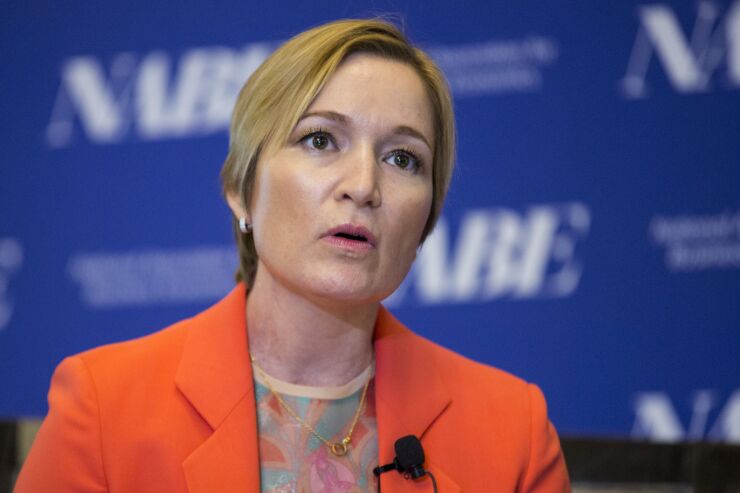Only slight movements of interest rates are expected in 2020 by members of the Securities Industry and Financial Markets Association’s Economic Advisory Council.
A half-year survey of 17 economists released Wednesday found the group was split over the next interest rate move by the Federal Reserve.
Half predict it will be a hike, with almost 88% saying it will not be until 2021 or later.
“That means the overwhelming majority expect the Fed to be on hold in 2020,” said Ellen Zentner, chief U.S. economist of Morgan Stanley who chairs the SIFMA advisory group.

Forty four percent, on the other hand, expect a cut in 2020 with 43% of that group expecting that cut to be in the second quarter.
The question is key because higher rates could cause bond prices to fall and yields to rise, impacting the market on a macro level.
Zentner told reporters Wednesday that the divergent views over the Fed’s next interest rate move was also reflective of the group’s division over economic growth expectations.
“I think it’s important to note that the views among the roundtable of economists do vary greatly with some looking for a downturn in the economy with others looking for growth as high as 2.6% in 2020,” she said.
The probability of a recession over the next 12 months is largely unchanged at 25% from the group’s midyear forecast while the percentage rises to 40% for the likelihood of a recession within 24 months.
Personal consumption is expected to be 2.6% this year and softening to 2.1% in 2020.
The unemployment rate is expected to experience only a slight uptick to 3.7% in 2020 with the monthly average jobs gains expected to be around 139,000, which would be a decline from 163,000 this year.
Overall the survey of 17 economists found the average expectation for U.S. economic growth to be 2.2% in 2020.
Zentner said the divergence of forecasts is common in the late stages of an economic expansion.
She described this year’s expected 2.2% economic growth as “above trend” despite the slowdown in the global economy and ongoing trade tensions.
“Underpinning growth has been sharply lower interest rates this year which have propelled activity among interest rate sensitive sectors while externally exposed sectors such as U.S. exports and investment in equipment have declined,” she said.
Zentner said “a more pronounced slowdown in the economy was averted because monetary policy makers responded quickly early this year to guard against downside risk and ease financial conditions.”
The pace of hiring has slowed but have been strong enough to move the jobless rate lower.
“As we look at 2020 there are a few early signs that the global growth slowdown is stabilizing, albeit at lower levels,” Zentner said. “U.S. GDP growth also is expected to be slower but with a better balance of growth as support for externally driven sectors comes back.”
Core inflation is expected to rise to 2.2% in the fourth quarter of 2020.
The survey predicts the Fed Funds rate will fall to 1.625% through the first quarter of next year and slightly lower to 1.62% by the last quarter of 2020.
Two year Treasuries are expected to fluctuate in this year and in 2020 between 1.563% and 1.600%.
Ten year Treasuries are expected to climb from 1.715% in the second quarter of 2020 to 1.850% in the fourth quarter of next year.
The 30-year mortgage is expected to rise slightly from 3.655% in the first quarter of 2020 to 3.775% in the fourth quarter.





